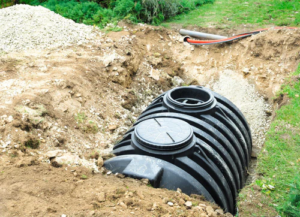Kitchen Renovation Tacoma WA involves crucial alterations to the structure, layout and design of your home’s kitchen. It’s ideal for homeowners looking to increase their home’s value and functionality.
It often involves significant structural changes and high-end materials. It also involves a considerable amount of labor cost and can extend the overall project timeline.

Several factors impact the cost of Kitchen Renovations. The most significant cost drivers are labor and material costs. The type of kitchen remodel you choose will affect these costs, as will the size and scope of the project. Generally, large projects are more expensive than small projects. Also, higher-quality materials cost more than lower-cost materials.
Depending on your vision, you can choose from two types of Kitchen Renovations: a full renovation and a surface-level update. A full renovation, or rip-and-replace, involves replacing every component in the kitchen. Think of it as reinventing a signature recipe with a new set of ingredients. This is the most transformative option, but it’s also the most costly.
A surface-level update is less expensive but still offers major change to your cooking space. Cabinet refacing and resurfacing, countertop refinishing, and fresh paint can cost 60-70% less than replacements. However, it’s essential to budget for a contingency fund for unexpected expenses.
Another factor that impacts kitchen remodel costs is the level of finish you choose for your renovation. Budget options like laminate and vinyl tend to be the most affordable, while mid-grade finishes offer a balance of affordability and quality. Top-of-the-line finishes like granite and quartz increase the overall cost of your kitchen.
Other common costs include permit fees, disposal fees, and utility hookups. These fees are required for changing the location of plumbing and electrical lines, which can be a complex process involving dropping walls and moving gas lines. This is especially true if you are changing the layout of your kitchen, and can add tens of thousands to your overall project cost. In addition to these costs, you may have to pay movers to move your appliances.
Design
Whether you’re doing a full kitchen remodel or simply upgrading certain elements, it’s important to keep functionality front and center. Lin says, “I always advise clients to really think through their specific storage needs and what they do in their kitchens on a daily basis so that the space will be most functional for them.”
This is particularly true if you’re changing the layout of your kitchen or moving appliances. If this is the case, it may be necessary to purchase additional cabinets and/or countertop material. This can lead to lengthy wait times and the need for scheduling flexibility, so it’s important to plan ahead.
Kitchen remodeling and renovation are two distinct processes that differ significantly from one another. Remodeling focuses on fundamentally altering the structure and design of the kitchen to create a new layout and aesthetic. This process often involves complex design modifications and construction work, including electrical, plumbing, re-plastering/tiling, and even property extensions.
A successful kitchen remodeling project will address both aesthetics and function, resulting in a beautiful and efficient space that reflects your unique style and taste. It will also increase your property value and make your home more appealing to potential buyers. Upgrading the kitchen to include modern amenities and energy-efficient appliances can also contribute to reduced utility bills and environmental benefits. In addition, maximizing storage space and improving flow will make cooking and cleaning easier. Kitchen Remodeling and Renovation can transform a tired kitchen into a welcoming and functional space that matches your lifestyle.
Layout
A renovation or remodeling project involves crucial alterations to your kitchen layout, which is the overall arrangement of cabinets and appliances in a room. It may also include adding or removing walls, installing new lighting fixtures and countertops, and upgrading appliances with more efficient models. Kitchen renovations can increase your home’s value and create a more functional space.
To design a kitchen layout, first determine the dimensions of your existing space and take measurements to ensure the proper placement of essential features. A good layout maximizes efficiency and minimizes wasted space. It also accommodates circulation routes and adheres to codes that dictate where plumbing, electricity, and ductwork must be located.
There are many kitchen layouts to choose from. Some are more popular than others, but you can also customize a layout to suit your style and lifestyle. Some popular layouts include galley, U-shaped, and island designs. Galley kitchens offer plenty of storage space and are ideal for smaller spaces. U-shaped kitchens work well in larger rooms and often feature a central island that serves as the focal point of the room.
If you’re considering a full remodel, consider hiring a general contractor to manage the various contractors and workers involved in your project. They’ll be able to keep the project on schedule and budget and make sure everyone stays on task. This will help prevent delays caused by unforeseen problems with electrical, plumbing, and drywall.
It’s also important to pay attention to safety when designing a kitchen layout. A proper layout can help prevent injuries from fires, scalding, and cuts. Ensure that there’s enough clearance for people to move around the stove, sink, and refrigerator. You should also position a fire extinguisher in a visible location, away from cooking equipment.
Functionality
The kitchen is a focal point of the home, and should be both inviting and functional. If your current kitchen is cramped and hinders day-to-day activities, or if it doesn’t offer the aesthetic you desire, it may be time to consider a Kitchen Renovation.
A Kitchen Remodel is a major project that can add value to your home, and requires careful planning to ensure success. It includes changing the layout and design, incorporating new materials, and installing new appliances and fixtures. It also may require structural changes, such as removing or adding walls and windows.
When planning your kitchen, it is important to consider the needs of your family and lifestyle. This will help you choose the best layout and design for your space, and will ensure that the kitchen functions well for your lifestyle. You should also consider how much storage you need, and make sure that the layout allows for efficient work flows. For example, you should include adequate cabinets and shelving for storing dishes, cookware, and pantry items.
Another consideration is the amount of counter space you need. You should also consider how much storage you will need for trash and recycling. If you need more storage space, you can consider adding a built-in pantry or creating a nook in the corner of your room.
During the remodeling process, you should take extra care to protect your furniture and other belongings from dust and debris. This will save you the hassle of having to move them later on. You can also donate your old cabinetry, appliances, and plumbing fixtures if they are in good condition. Places like Habitat for Humanity’s ReStore will pick up unwanted items.
Aesthetics
Kitchen renovations are a chance to make a space that truly fits your lifestyle and tastes. The colors, materials, and design choices you choose can influence how the space feels to you. They can also have an impact on how the kitchen looks to others, including future homeowners. When it comes to aesthetics, the key is to balance beauty and functionality. An aesthetically pleasing kitchen can elevate your mood and make cooking more enjoyable. However, it should not be impractical or inefficient.
Stylish cabinets, countertops, and backsplashes can make your kitchen feel more modern and luxurious. You can also use wood flooring to add warmth and texture to the room. Patterned or textured tiles are also popular kitchen designs, adding visual interest and a sense of character.
Another way to update your kitchen’s style is by incorporating new lighting, appliances, and fixtures. This can create a more contemporary feel and increase the resale value of your home. You can also replace older or less energy-efficient appliances with newer models that are more sustainable and efficient.
Kitchen Renovations can also be a great opportunity to incorporate green practices into your home. For example, installing eco-friendly appliances and using recycled materials can help to reduce your carbon footprint. This will have a positive effect on your health and the environment.

